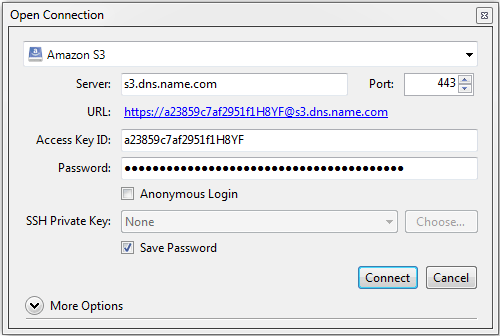

If not you can always choose File => Open Connection.

In this example, the domain you've created and want to access is and you have configured DNS so that *. (wildcard domain) maps to your Content Gateway server or https proxy.ĭownload and install these two Cyberduck profiles for Content Gateway: Please let us know if you are trying to use such software. ExpandDrive has worked as has "rclone mount" but we now recommend WebDrive. Note: products and open source virtual file systems like Mountain Duck and s3fs can usually be configured with Gateway S3 but are not supported and are known to have issues. When testing be sure to eject any current connection, restart Cyberduck, and create a new connection on any test – changing the connection type seems buggy.

Using the default "Amazon S3" profile works as do the "Swarm S3 (HTTP)" and "Swarm S3 (HTTPS) profiles" below. This can lead to a Login failed / request signature mismatch and a "Cannot read container configuration" error when opening a bucket, due to a GET /?location request. Warning: you shouldn't have to use it, but the (non-default) "S3 AWS2 Signature Version (HTTP)" connection type does not use bucket-in-path style access even with that setting. % defaults write ~/Library/Preferences/ch. s3. true. Rather than using our profiles you can disable "bucket in host" requests with a Cyberduck internal settings : Recent Cyberduck defaults to " bucket in host" style requests which works fine with Swarm S3 but requires that your HTTPS proxy server certificates include both domains and domain wildcards ( and *.). The default Amazon S3 profile in Cyberduck and V4 signatures work with recent Cyberduck releases and Gateway 6.2 and later.īut we also provide Swarm S3 profiles which force " bucket in path" style requests. Cyberduck is a free, popular, cross-platform GUI application that can connect to your Swarm domain using Content Gateway S3.


 0 kommentar(er)
0 kommentar(er)
